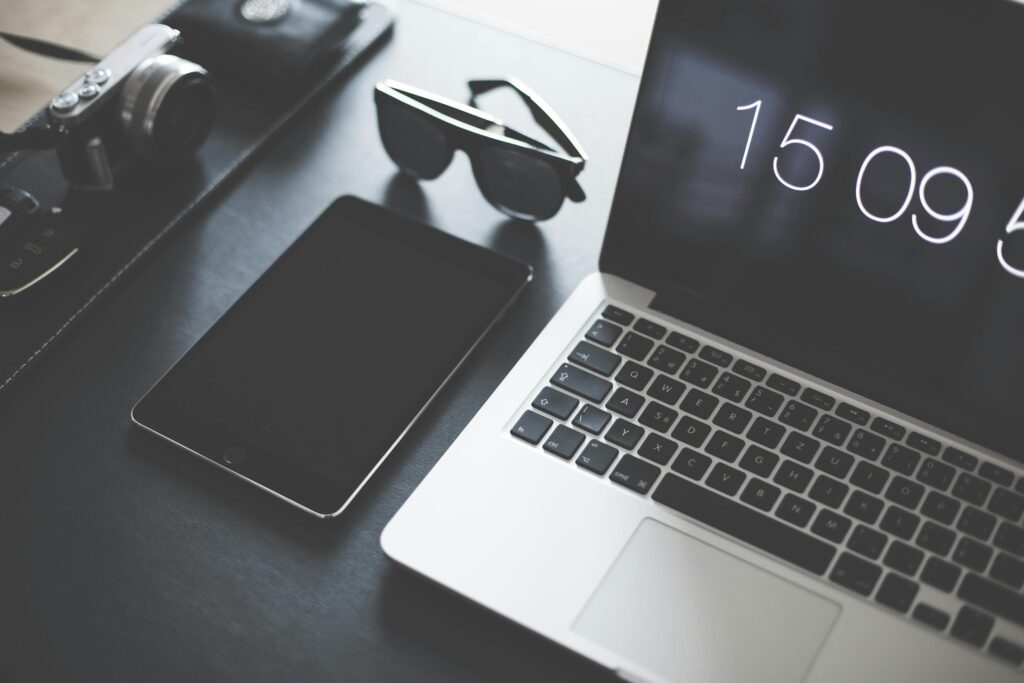Discover 5 effective strategies to reduce your screen time and boost focus. Learn how to manage digital distractions and improve productivity in your daily life.
Did you know the average American adult spends nearly 5 hours daily on their smartphone? This shows how much digital devices control our lives. They can hurt our productivity, well-being, and focus. But, there are ways to take back control and improve your focus for a better life.
Also see; How to Cut Screen Time Without Sacrificing Productivity
Key Takeaways
- Discover effective techniques to reduce your overall screen time and reclaim your attention
- Learn how to cultivate mindful presence and develop a healthier relationship with your digital devices
- Implement practical strategies to set boundaries and create screen-free zones in your life
- Prioritize real-world connections and activities to boost your focus and productivity
- Gain the tools and insights needed to enhance your concentration and overall well-being
Embrace Mindful Presence
Start by being more aware of your digital habits. This awareness helps you spot patterns and triggers for too much screen time. It leads to using technology more intentionally and productively.
Cultivate Awareness of Screen Habits
Step back and watch your screen time habits. When do you grab your devices? What makes you check your phone or laptop? Knowing these triggers helps you cut down on screen time and stay focused.
Practice Mindfulness Techniques
Mindfulness, like meditation and deep breathing, can greatly reduce digital distractions. These practices keep you present and focused. Try different mindfulness exercises to see what works for you.
“Mindfulness is the aware, balanced acceptance of the present experience. It isn’t more complicated than that. It is opening to or receiving the present moment, pleasant or unpleasant, just as it is, without either clinging to it or rejecting it.”
– Sylvia Boorstein
By embracing mindful presence and understanding your screen habits, you’re on the path to less screen time. Use these strategies with the tips in the next sections for a healthier tech relationship.
Reducing Screen Time: Set Boundaries
Setting clear limits on your screen time is key to managing it well. It helps you stay focused and productive. Plus, it improves your overall health and happiness.
Establish Screen-Free Zones
Make some areas in your home screen-free. This could be your bedroom, the dining table, or a workspace. These places should be free from phones, tablets, and laptops. It lets you fully connect with the moment.
Implement Time Limits
- Limit your time on certain apps or activities. For example, you might limit social media to a few minutes a day. Or, set a time to stop checking emails.
- Try digital tools or apps to track and block screen time. They can help you stay on track and focused.
- Find the right time limits for you. They should fit your lifestyle and help you stay productive. Be ready to change them if needed.
By setting these limits, you can find a better balance between your digital and real lives. It boosts your focus, productivity, and happiness.
“Boundaries are a sign of self-respect. They are healthy, not selfish.” – Unknown
Prioritize Real-World Connections
To boost focus and cut down on digital distractions, focus on real-world activities. Step away from screens and dive into face-to-face talks, try new hobbies, or enjoy the outdoors. These offline experiences help you enhance your focus and improve productivity with less screen time.
Building real connections with friends, family, and your community is key. It helps you reduce screen time and boosts your well-being. Join a sports team, volunteer, or just enjoy a coffee with someone you love. These activities help balance your digital and non-digital life.
By choosing meaningful offline activities, you can avoid digital distractions. This change not only boosts your focus but also improves your mental, physical, and emotional health. It leads to more productivity and satisfaction in your daily life.
FAQ
How can I become more aware of my screen habits?
The first step to less screen time is to notice when and why you use devices. Look for patterns or triggers that make you use your phone or laptop too much. Try to be more aware of your digital habits.
What are some effective strategies for setting screen time boundaries?
Setting clear limits on screen time helps you focus better. Make some areas of your home screen-free, like the bedroom or during meals. Also, set time limits for certain apps or activities to avoid too much screen time.
How can I prioritize real-world connections to reduce my screen time?
To spend less time on screens, focus on real-life connections and activities. Try to meet people face-to-face, explore hobbies that don’t involve screens, and enjoy the outdoors. These steps can help you cut down on screen time and feel better overall.
What mindfulness techniques can I use to manage screen time?
Mindfulness, like meditation and deep breathing, can help you stay focused and less tempted to check your devices. Regular breaks for these practices can help you control your screen use and improve your concentration.
How can I increase my productivity and focus with less screen time?
Cutting down on screen time can really boost your productivity and focus. By setting boundaries, focusing on real-life connections, and practicing mindfulness, you can reduce distractions. This leads to better concentration, smarter decisions, and a sense of accomplishment.



